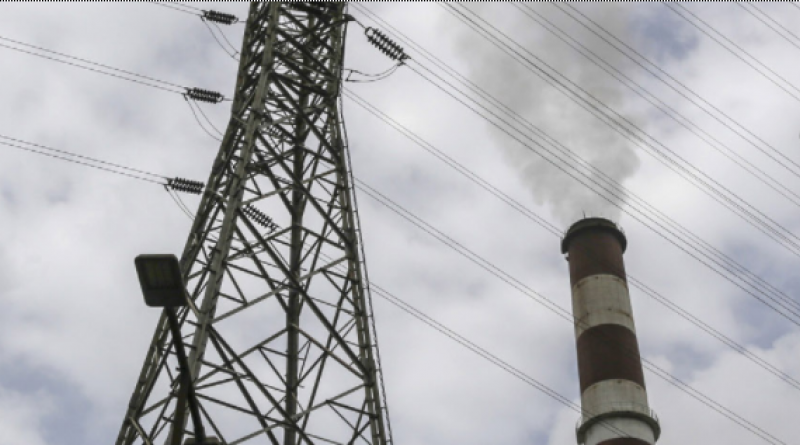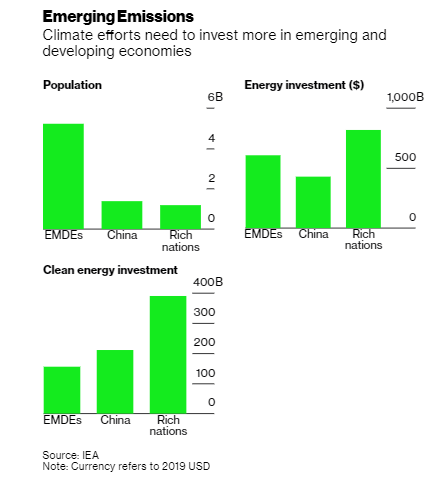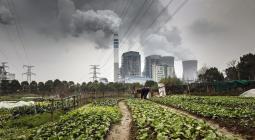Low Clean-Energy Spending in Poor Countries Puts Climate Goals in Peril

Investments in developing markets need to reach $1 trillion by 2030, up from just $150 billion last year, according to a new IEA report.
As the world’s richest economies invest in new and cleaner power supplies, it’s vital for everyone that poorer nations don’t get left behind. Investments in clean energy in these economies will need to surge to over $1 trillion a year by the end of the decade in order to meet global climate goals, up from less than $150 billion in 2020, according to a new report the International Energy Agency.
Already, developing and emerging markets have seen annual investments in the energy sector fall around 20% since 2016. It’s a stark contrast to European countries and the U.S. that pioneered the burning of fossil fuels, but are now able to spend a lot more to cut their carbon footprints.
“This is the most critical fault line in the international fight against climate change,” said IEA Executive Director Fatih Birol. He urged Group of Seven leaders, who are meeting in Cornwall, England later this week, to commit to meeting the goal set by developed-country signatories of the Paris Agreement to mobilize $100 billion a year in climate finance for developing countries. “That should be the floor,” Birol said. “International financial institutions could be the catalyst.”

It will take trillions of dollars to eliminate emissions from transportation, buildings and heavy industries around the world. Leaders of wealthy nations have often argued that accelerating the transition to green energy can help stimulate their local economies, but concentrating investment in only rich countries won’t be enough to eliminate emissions.
Developing countries make up two-thirds of the world's population, but only one-fifth of global clean-energy spending. Without ramping up that investment significantly, these nations are set to account for most of the continued rise in emissions over the coming decades.
Focusing pollution-lowering investments on rich countries is also inefficient. It costs half as much to avoid a metric ton of CO₂ emissions in a developing country than it does in an advanced economy, according to the IEA. That’s partly because emerging nations can go straight to cleaner and more efficient technologies rather than having to phase out or retrofit polluting energy projects that are already underway.
Still, finance remains a key barrier to building new projects. The costs of financing in emerging markets are as much as seven times higher than in the U.S. and Europe, and even higher in sectors deemed more risky such as clean hydrogen. That makes it difficult for developers to sell debt or secure profitable returns on clean-energy investments.
The latest IEA report comes after the agency said its models showed the world must stop spending on news oil, gas and coal fields immediately to reach net-zero emissions by 2050.
9 June 2021
Bloomberg Green




